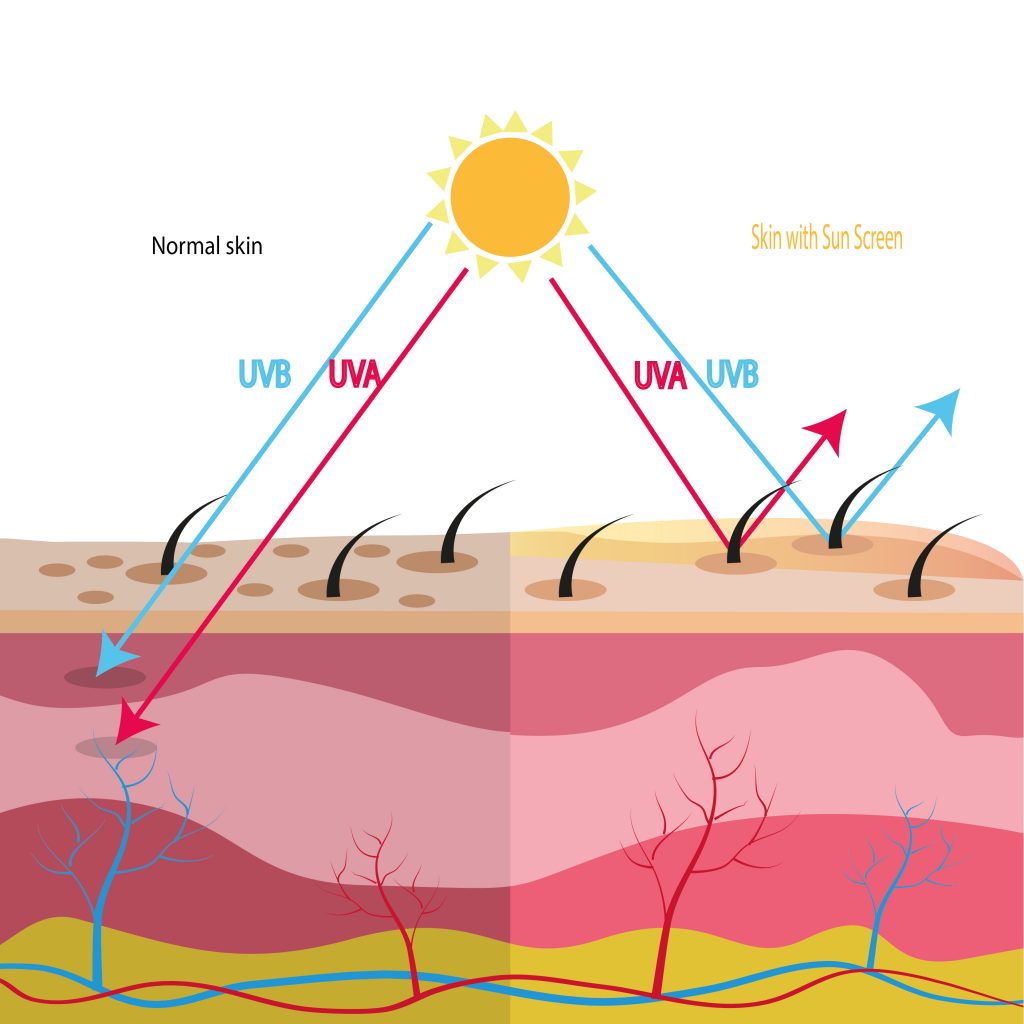
Patients with photosensitivity disorders must protect their skin from the solar radiation
that is responsible—UVA, UVB, visible light, or a combination. Severe photosensitivity
can have a catastrophic impact on lifestyle—outdoor activities may be impossible.
Sunglasses, clothing, hats, and shade (indoor activities when the sun is strongest between
11.00 a.m. and 3.00 p.m.) provide more effective photoprotection than sunscreens.
Clothing, hats, sunglasses, and windows
• Clothing and hats should have a tight weave, sufficiently thick to block transmission of
visible light (check the transmission of visible light by trying to look through the item
held up to the sun).
• Clothing should be loose-fitting (photoprotective fabrics are available). Patients should
wear hats with broad brims (baseball caps do not protect the ears or neck), as well as a
flap of cloth to cover the neck, shirts with long sleeves, trousers—not shorts, and shoes,
rather than sandals. Some patients may need gloves for driving.
• UV-blocking films can be obtained for window glass, car windows, and fluorescent
lights, if required.
• Sunglasses (wrap-around) to protect against UV radiation and blue light.

Sunscreens
• Sunscreens may be physical or chemical.
• Physical sunscreens (sunblocks): opaque creams containing particles (titanium dioxide,
zinc oxide) reflect and scatter UVR (UVB and UVA) and visible light. Physical
sunscreens are less cosmetically acceptable than chemical sunscreens, but more effective
and safer.
• Chemical sunscreens absorb UVR of certain wavelengths, either UVB or UVA. UVB
chemical sunscreens protect against UVB-induced sunburn by blocking UVB. They
contain cinnamates and other agents. UVA chemical sunscreens provide limited
protection and contain chemicals such as oxybenzone. New dual UVB/UVA filters and
photon absorbers are being developed.
• Chemical sunscreens may cause contact dermatitis (irritant or allergic).
• Patients using a UVB-absorbing sunscreen that prevents immediate erythema or
sunburn should be warned not to stay out longer in the sun, to prevent exposure to
excessive UVA.
• Lips should be protected, as well as the skin.
• The potential of topical or oral antioxidants to reduce photodamage is being
investigated.
• Patients avoiding UVB may become vitamin D-deficient.